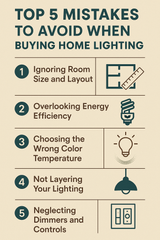8 Common Misconceptions Regarding Interior Designers
8 Common Misconceptions Regarding Interior Designers
All careers and the people who work them have misconceptions held by others. We often associate certain characteristics or job duties with certain careers. We presume doctors were all straight-A students in school, that all artists are poor, and that every dancer has gross feet.
When it comes to the field of interior design, there are a lot of misconceptions at hand as well. Let’s check them out and help clarify the truth:
1. All interior designers have an uptight, highly-stressed, Type A personality.
Perhaps you’ve seen designers in movies where they are often perceived as frustrated, snappy, hard-to-please perfectionists who want everyone to wait on them. Apart from contrary belief, there are many designers out there who are quite the opposite.
There are absolutely Type B and other personality types involved in the career of interior design. You can surely find a designer that is calm and down-to-earth. You may also come across ones that are high-strung and fast-paced.
The great thing about the many personalities in interior design is that each designer provides a unique approach to what they do and how they react to things. If every designer had the same personality, there would be less versatility and a flow of unique ideas in this field.
2. Most designers are female or have feminine characteristics.
Interior designers come in a vary of forms: shy, outgoing, serious, playful, masculine, feminine, the list goes on. Especially in this day and age where occupations have a more favorable mix of different individuals as gender roles fade, you can find a plethora of males or even masculine females in the field of interior design.
In fact, some designers have more feminine or more masculine tastes and designs, and it shows in their work. Again, this provides versatility in interior design.
3. Interior designers charge ridiculous prices.
Because many of us look up to famous interior designers and often don’t ever get in touch or hire a local interior designer, many of us form the misconception that all designers charge high prices. This is incorrect.
The interior designers who charge the most for their work are most often the ones who have a name attached to them or have years of successful experience under their sleeves that make the cost of their work worth what they actually provide.
Many interior designers, especially those newer in their field, charge what the average person would consider a very favorable price.
4. Interior design is an overrated and unnecessary career path.
Actually, if anything the field of interior design is underrated and underappreciated. It can be difficult for interior designers to build their name and get the word out about their capabilities and who they are.
Interior design is necessary just as any other career path because it provides purpose: to make an interior space feel welcoming, clean, and beautiful. In turn, clients feel happy and relaxed to spend time in their space.
In fact, numerous studies have found that a cluttered or improperly designed space can increase levels of anxiety and depression while decreasing concentration and the brain’s natural ability to organize information.
The right design, color scheme, and level of comfort can provide exactly what one may need to wind down after a long and stressful day. Being surrounded by a space that is organized and well-put together has a lot of power on us cognitively, mentally, and emotionally.
Consider how much happier, peaceful, and positive you feel in a clean space with a gorgeous design versus how you feel in a rugged, dark, cold room.
5. Professional designers only opt for what’s trendy and aren’t versatile to other tastes.
While it’s true that interior designers are aware of what’s popular and what’s not, this doesn’t mean that that’s the only inspiration they stick to. Designers know what looks good, but they also consider what their clients want.
In fact, the majority of interior designers spend significant time understanding what their clients are interested in – even when the client themselves doesn’t know. Some designers ask what their client’s favorite colors are, whether they’re into modern or contemporary options, and how they feel about certain patterns or textures and so on. Versatility is an integral component of design in general.
Because interior design is an art, it can still be difficult to read each client. Thus, the designer needs to rely mostly on their own ability to choose what is best. Almost always a design comes out a little different than what the client imagined, but most of the time, it’s in a good way.
6. Designers always know how to tackle each and every design and never run into problems.
Let’s be honest here, every single human on this planet runs into problems, even in a career they’ve had knowledge and experience in for decades. There is not an interior designer dead or alive who doesn’t have uncertainties or frustrations like any other human does.
Careers that are art-based like interior design can be stressful in that sometimes things look right, but they don’t feel right. Then there’s times where a designer imagines something in their head but can’t replicate it because there isn’t the exact piece of furniture or decoration they’re looking for, their budget to work with is too small to expand the design, or they simply are having trouble making things fit and complement the way they should.
Second thoughts happen more than anything when it comes to design – even ask Joanna Gaines from HGTV’s Fixer Upper.
7. Being an interior designer is easy-peasy.
If you read number 6, then you are well-aware that interior design is not an easy career path (but it can be very rewarding and entertaining if you let it). As an extension of what was already discussed, interior design makes use of a plethora of strategies and “rules” designers must follow.
If interior design was easy in terms of knowing what works and what doesn’t, what would still make it difficult are the facts that 1) clients must be pleased, and 2) designs must be chosen when there are limitless routes and possibilities at hand to pick from.
Even newer interior designers have to strategically contemplate what they’ll do and how they’ll do it with not just what they personally think looks good in mind but also what the client and even others will think. There is less room for creativity in interior design than one may think based on the latter – especially when there is a budget involved.
If every client was pleased, every design pieced together perfectly, and each budget was limitless, then maybe – just maybe – interior design would be an easy field to work in.
8. There is no such thing as the ideal designer for me.
Truly, there is an interior designer for everyone out there. However, whether or not they actually want, need, or even hire one is a whole different story. Surely you have witnessed an interior design in a magazine or on television that appealed to you. If that’s the case, there is a designer for you!
Even if you’re for sure that the right designer isn’t out there, be sure to explore our designer page here on Cocoweb. You can receive tips and inspiration for implementing your own interior designs or can get connected with professional designers.
Conclusion
As harsh as many of these misconceptions regarding interior designers are, many people hold them to this day. Interior designers are not all the same, and just like any other human, they struggle too. When it comes to interior design on a broad scale, it plays an important role in our lives, as we discussed. There is also a lot of hard work and consideration that goes into each design.
Hopefully you have gained a new appreciation for interior design and those who are involved in this field after reading this article!
Recent Posts
-
Top 5 Mistakes to Avoid When Buying Home Lighting
Lighting plays a crucial role in shaping the ambiance, functionality, and aesthetic appeal of your h …26th Jun 2025 -
Why Lighting Is the Most Underrated Design Element in a Room
Walk into a well-designed space, and you might first notice the color of the walls, the statement fu …13th May 2025 -
How to Choose the Perfect Painting for Your Home or Office
When it comes to decorating your space, choosing the perfect painting can be a game-changer. A well- …7th Feb 2025




